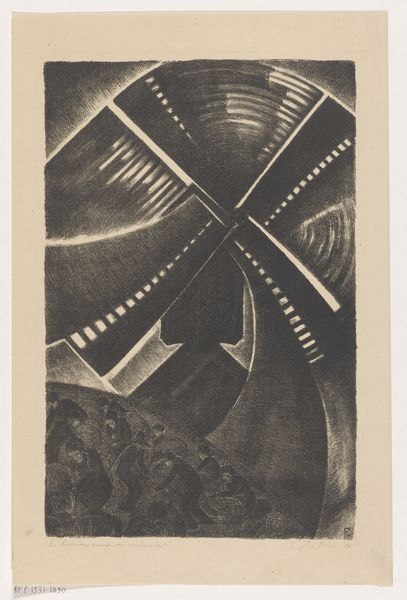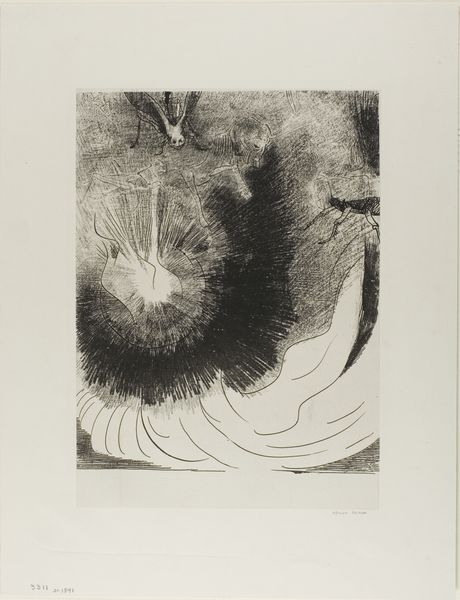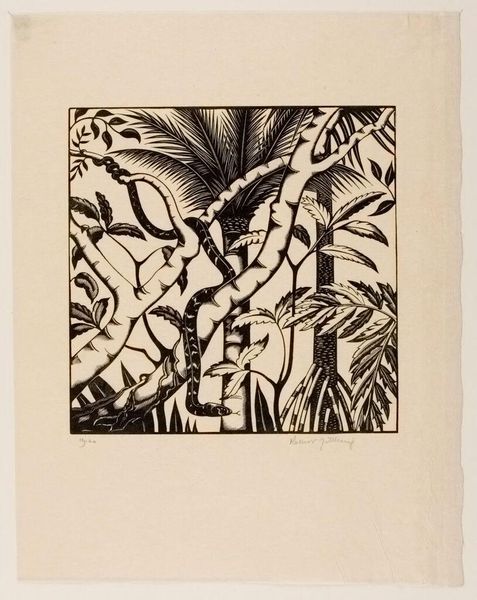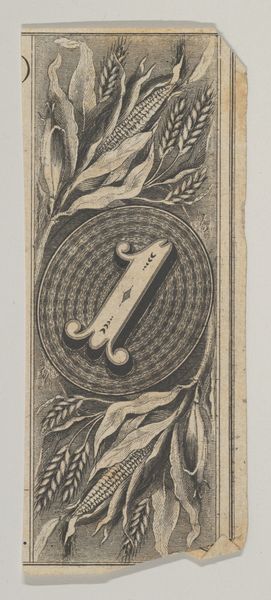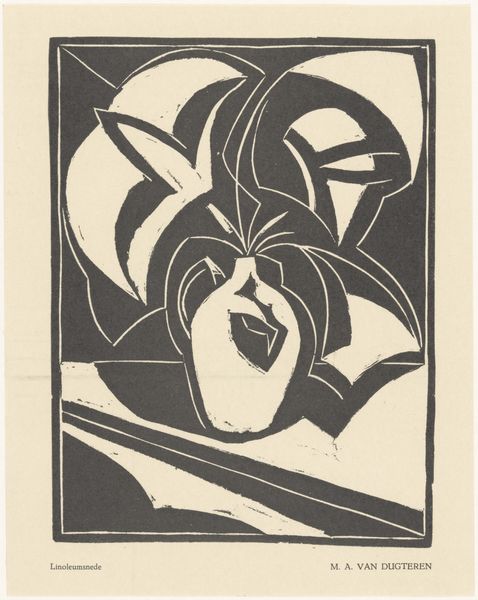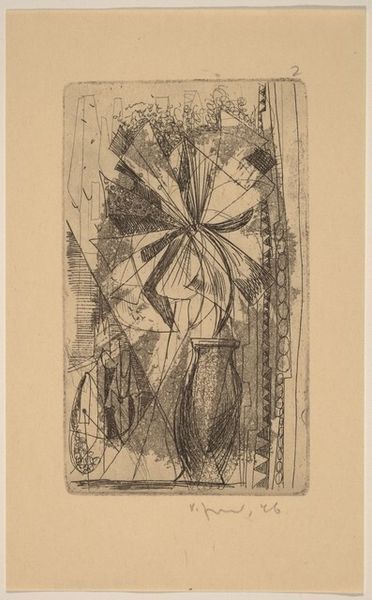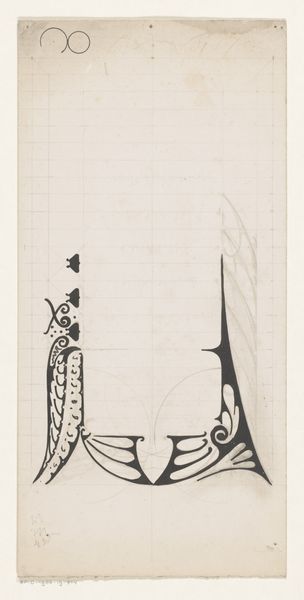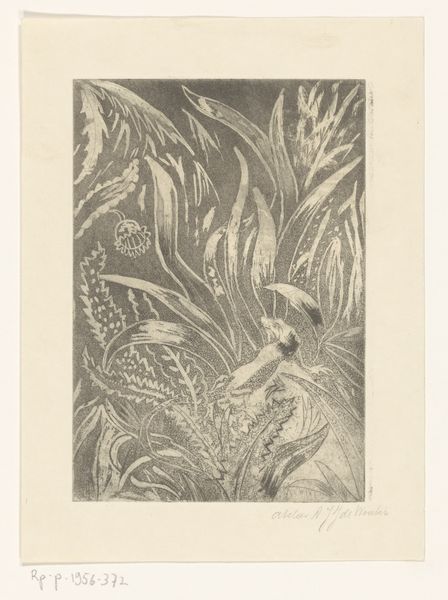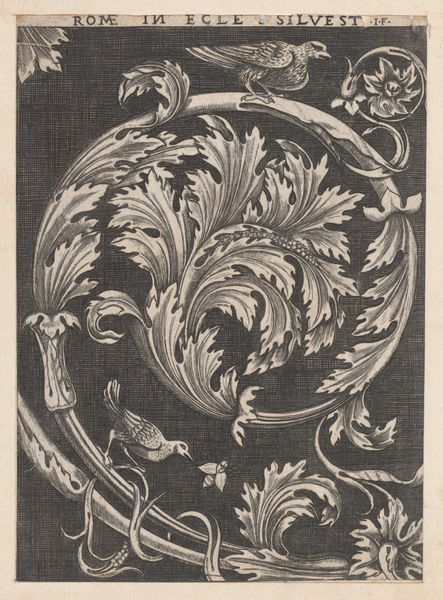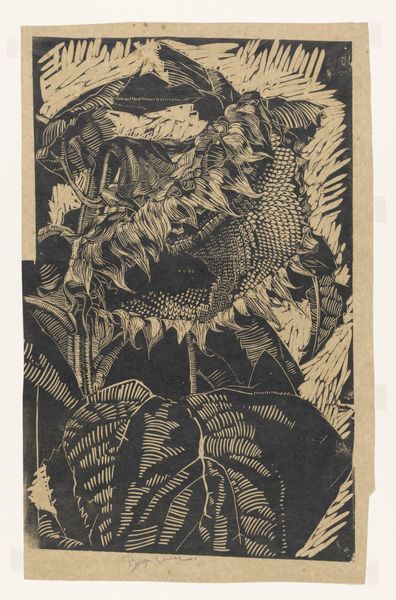
Dimensions: height 570 mm, width 404 mm
Copyright: Rijks Museum: Open Domain
Editor: This is “Uitgebloeide Strelitzia,” or “Finished Strelitzia,” by Samuel Jessurun de Mesquita, from 1934. It’s a woodcut print at the Rijksmuseum. It feels strangely haunting, almost melancholic despite being about a flower. The stark black and white adds to that feeling. What stands out to you? Curator: Haunting is right. It whispers secrets, doesn’t it? I see a dance between life and death. The Strelitzia, past its prime, still holds a certain austere beauty. Look at those bold lines, practically gouged into the wood – a real primal energy. It reminds me of the Dutch vanitas paintings but distilled to its essence: no overflowing banquet, just the echo of beauty fading. That stylized face, almost hidden in the leaf… what do you make of her? Editor: I noticed her too. She almost blends in with the plant, like she’s part of the life cycle. Maybe it’s about the interconnectedness of everything? Curator: Interconnected, yes. Perhaps Mesquita is hinting at our own mortality reflected in the flower’s decline. The geometric shapes also fascinate me – that deliberate contrast with the organic forms. It is as if nature and structure, feeling and form, are intertwined but at odds with one another. Do you get a sense of that conflict too? Editor: I see it now, especially the strong lines boxing in the softer curves. I thought it was purely decorative, but it creates tension. Curator: Exactly! It's the struggle, the inherent drama of existence laid bare. The starkness, the raw cut of the wood...it’s not just about decay; it’s about confronting the transient nature of beauty, about the profound awareness of our shared fate. It almost brings tears to my eyes, a bittersweet ache, a song of acceptance. Does it speak to you differently now? Editor: Definitely. It’s much more than just a flower drawing; it's about us. Thanks for pointing that out!
Comments
No comments
Be the first to comment and join the conversation on the ultimate creative platform.
